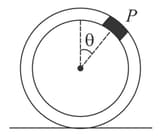In the figure shown a ring is rolling without sliding with a velocity on the horizontal surface of the body (of the same mass as ). All surfaces are smooth. has no initial velocity. What will be the maximum height (from initial position) reached by on .
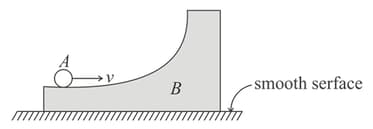


Important Questions on Rotational Mechanics
A uniform rod of mass , length is placed over a smooth horizontal surface along -axis and is at rest as shown in the figure. An impulsive force is applied for a small-time along -direction at the point after this rod moves freely. The –coordinate of the end of the rod when the rod becomes parallel to –axis for the first time is (initially the coordinate of centre of mass of the rod is
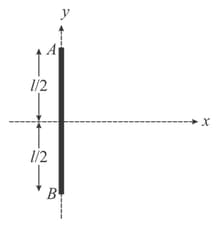
A uniform rectangular plate of mass which is free to rotate about the smooth vertical hinge passing through the centre and perpendicular to the plate is lying on a smooth horizontal surface. A particle of mass moving with speed collides with the plate and sticks to it as shown in the figure. The angular velocity of the plate after the collision will be
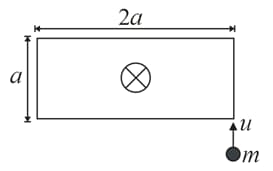
A particle of mass is moving horizontally at speed perpendicular to a uniform rod of length and mass . The rod is hinged at centre and can freely rotate in the horizontal plane about a fixed vertical axis passing through its centre . The hinge is frictionless. The particle strikes and sticks to the end of the rod. The angular speed of the system just after the collision
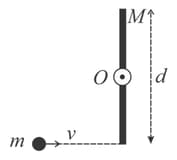
A uniform sphere of mass is given some angular velocity about a horizontal axis through its centre and gently placed on a plank of mass . The coefficient of friction between the two is . The plank rests on a smooth horizontal surface. The initial acceleration of the centre of the sphere relative to the plank will be
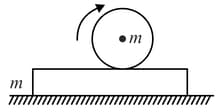
A small block of mass is rigidly attached at to a ring of mass and radius . The system is released from rest at and rolls without sliding. The angular acceleration of the ring just after release is
